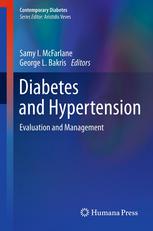

Most ebook files are in PDF format, so you can easily read them using various software such as Foxit Reader or directly on the Google Chrome browser.
Some ebook files are released by publishers in other formats such as .awz, .mobi, .epub, .fb2, etc. You may need to install specific software to read these formats on mobile/PC, such as Calibre.
Please read the tutorial at this link: https://ebookbell.com/faq
We offer FREE conversion to the popular formats you request; however, this may take some time. Therefore, right after payment, please email us, and we will try to provide the service as quickly as possible.
For some exceptional file formats or broken links (if any), please refrain from opening any disputes. Instead, email us first, and we will try to assist within a maximum of 6 hours.
EbookBell Team

4.0
56 reviewsDiabetes and hypertension have evolved as two of the modern day epidemics affecting millions of people around the world. These two common co-morbidities lead to substantial increase in cardiovascular disease, the major cause of morbidity and mortality of adults around the world. In Diabetes and Hypertension: Evaluation and Management, a panel of renowned experts address a range of critical topics --from basic concepts in evaluation and management of diabetes and hypertension, such as dietary interventions, to evaluation and management of secondary hypertension in clinical practice. Other chapters focus on high cardiovascular risk populations such as those with coronary heart disease, chronic kidney disease and minority patients. In addition, evolving concepts and new developments in the field are presented in other chapters, such as prevention of type 2 diabetes and the epidemic of sleep apnea and its implication for diabetes and hypertension evaluation and management. An important title covering two of the most troubling disorders of our time, Diabetes and Hypertension: Evaluation and Management will provide the busy practitioner with cutting edge knowledge in the field as well as practical information that can translate into better care provided to the high-risk population of diabetics and hypertensive patients.